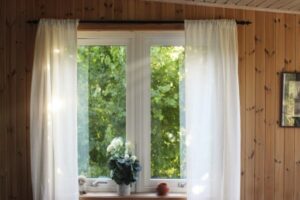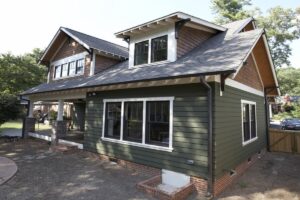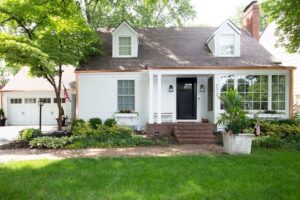Your siding is warping, buckling, or cracking for several reasons. Some of these are poor installation, weather damage, and the type of siding material. Damaged siding is frustrating and not only jeopardizes your house but also looks unattractive.
But warping, buckling, and cracking are just the obvious signs of a bigger problem, and it’s crucial that you figure out the underlying cause.
Your Siding Is Warping From The Weather
Siding is supposed to protect your house from the elements and keep it insulated. But that means it needs to hold up under harsh weather conditions. But siding can only do so much, and sometimes the weather wins.
Temperature Fluctuations
When your siding material has good thermal stability and proper clearances, it stands up well to temperature fluctuations. But, when your siding can’t expand and contract with extreme heat and cold, it can warp, buckle, and crack.
UV Exposure
Some siding materials are more susceptible to UV damage than others. If your siding doesn’t have a protective UV coating, harsh sun rays can cause it to warp and fade.
Moisture Infiltration
No siding likes a lot of moisture, but some handle it better than others. But when moisture gets behind the siding, it can cause warping, buckling, and cracking. Poor flashing and damaged caulking leave your siding vulnerable to water damage.
Other Reasons Your Siding Is Warping
The weather isn’t the only reason your siding is warping. You may not have control over the elements, but you can control who installs your siding and how you look after it.
Improper Installation
The easiest way to ensure your siding stays warp-free is to install it professionally. Regardless of your chosen material, you want a contractor familiar with it and the manufacturer’s guidelines.
Siding installation red flags are improper fasteners, inadequate clearances, and ignoring the expansion and contraction requirements. All of these can cause your siding to buckle and crack.
Poor Maintenance
Even the most low-maintenance siding needs some TLC to keep it functioning effectively and looking good. Regularly inspect your siding to check the flashing, weatherstripping, and caulking. These are all things that help keep moisture off your siding. Painting, resealing, and staining your siding can also offer added protection from moisture and UV rays.
Failing to follow the manufacturer’s guidelines can also damage your siding. Stay away from harsh chemical cleaners and abrasive brushes that will damage the protective layer on your siding and make it more susceptible to damage.
Simple house maintenance, like trimming shrubs and low-hanging branches and cleaning the gutters, is an easy way to keep excess moisture off your siding.
Durability of Different Siding Materials
The type of siding you choose is critical because some materials are more prone to warping, buckling, and cracking. We think the best siding for Kentucky homes is James Hardie siding.
Wood
Wood siding is prone to warping because it’s susceptible to moisture and humidity. It can also crack and weather from UV rays and water infiltration. If you choose wood siding, be prepared to keep on top of maintenance.
Vinyl
Vinyl siding warps under extreme temperatures, direct sunlight, and heat. It can also crack in frigid temperatures or through impact like hail.
Fiber Cement
Fiber cement, like James Hardie, is highly durable and can withstand our volatile Kentucky weather. But if it isn’t installed correctly or properly maintained, your siding can sustain damage from harsh weather.
Ask Us Your Siding Questions
You’re not a siding expert. It can be challenging to know how to choose the best siding, properly maintain it, or how to replace it if it’s damaged.
So, if your siding is warping, contact us for a free consultation and let us help.






